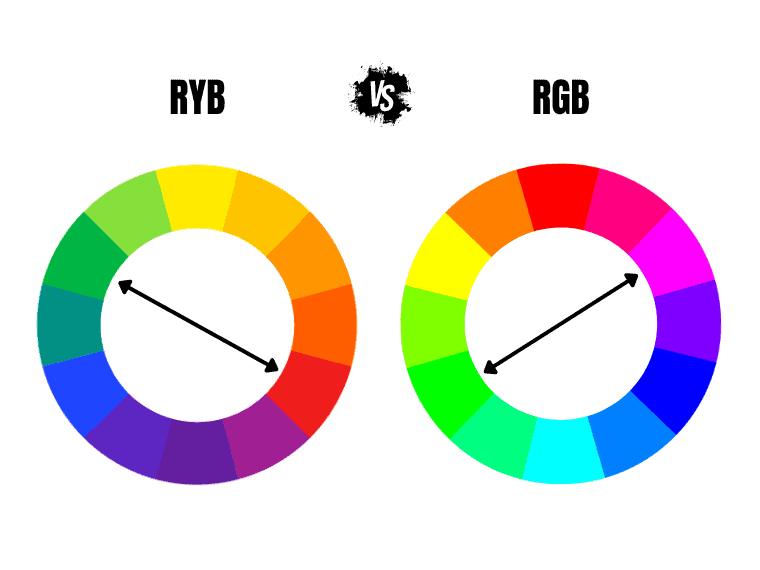If you’re looking for the opposite of green, you’ve come to the right place. However, the opposite color of green varies on the color space. To learn more about this, let’s look at different wheels.
In today’s article, you’ll find the answer to several questions like:
- What is the opposite of green on different color wheels?
- How do you find out the opposite color of green for your interest?
- What is the opposite of the most popular green hues?
What Is the Opposite of Green?
If you ask a painter what the opposite of green is, they will say green. A digital designer, on the other hand, will give you a different answer: magenta. They’re both correct! However, they refer to different color wheels: RYB and RGB.
So the answer differs depending on the color wheel used. That’s because painters use the traditional color wheel, while designers use the additive RGB model, which goes hand in hand with the subtractive CMY model.
Let’s find out more!
What Is the Opposite of Green in RGB?
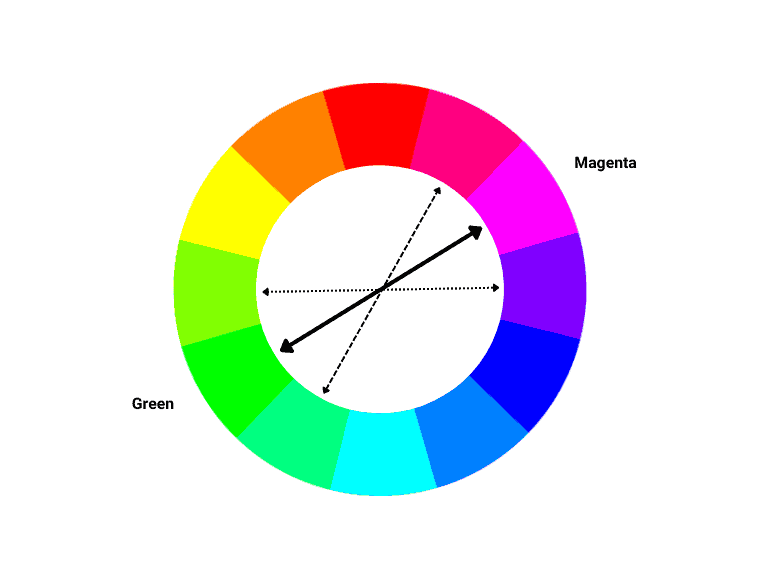
This additive color space is used by everyone working with digital deliverables. That’s because RGB deals with light. So, whether you are a web designer, developer, or digital artist, you definitely work with this color space.
RGB is short for the primary colors used by this model: red, green, and blue. By mixing them, you get the secondary colors cyan, magenta, and yellow.
Green is one of the primary colors of RGB, along with blue and red. Its complementary color, or the hue that sits on the opposite side of the wheel, is magenta.
When it comes to light and physics, the opposite of green is magenta – the secondary color resulting from mixing red and blue. As you go towards the blue side of the green, its opposite color tends towards red. As you go towards yellow, the complementary color changes to purple or blue.
Green
Hex #00FF00
RGB 0, 255, 0
CMYK 100, 0, 100, 0
Magenta
Hex #FF00FF
RGB 255, 0, 255
CMYK 0, 100, 0, 0
So, the color opposite of green depends on the green chosen.
For example, the opposite of chartreuse is blue, while the opposite of turquoise is alizarin crimson – a variation of red.
Below we have prepared a list of the colors opposite the different greens.
What Is the Opposite of Green in CMY?
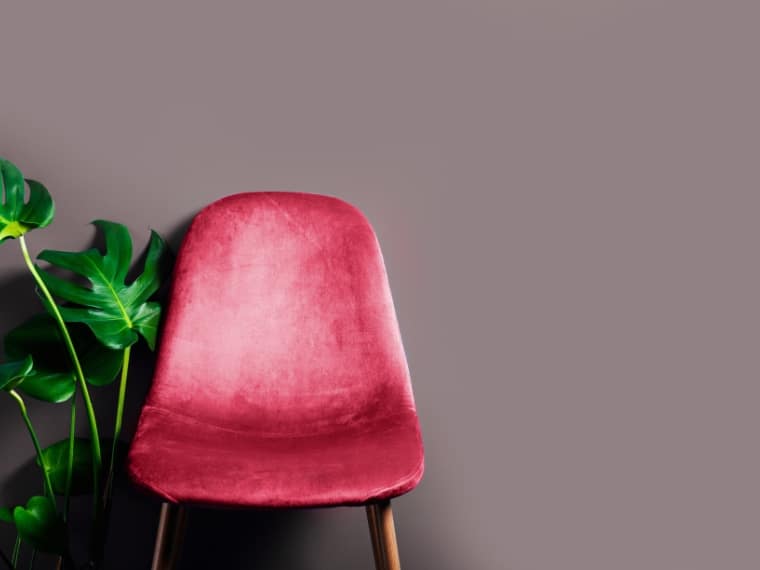
CMY is the subtractive model in modern color theory, which goes hand in hand with the RGB model, meaning that the secondary colors of one are the primary colors of the other and vice versa.
CMY works with pigments and inks, and its primary colors are cyan, magenta, and yellow. If you mix these colors, you get red, green, and blue – the secondary colors.
In the RGB and CMYK space, green can also be found in tertiary colors such as chartreuse and spring green.
By mixing a primary with a secondary color, you get tertiary colors:
- Chartreuse (yellow and green)
- Spring green (cyan and green)
- Azure (cyan and blue)
- Violet (magenta and blue)
- Rose (magenta and red)
- Orange (yellow and red)
This model is also used in classic printers. These come with an additional black toner (K) to these colors to add blackness and streamline the process. CMYK might sound familiar, right?
But CMY works differently from RGB. CMY starts with white and gets darker as color is added. The RGB starts with black (dark) and gets brighter as color is added.
If RGB adds color, CMY subtracts it. This refers to the type of mixing, additive vs. subtractive.
Subtractive color mixing (CMY) involves combining pigments or dyes that absorb certain wavelengths of light.
Each color absorbs or subtracts specific wavelengths of light. When the primary colors are mixed together, they subtract or absorb more light, resulting in darker and less intense colors. Combining all three primary colors at maximum intensity in subtractive mixing would result in muddy brown or black, as almost all wavelengths of light are absorbed.
In additive color mixing, each color contributes to different wavelengths of light, and when all three colors are combined, they cover the entire visible spectrum of light, resulting in white light. Thus, as color is added, the brighter the resulting color becomes.
Because the CMY and RGB color wheels go hand in hand, the opposite of green in the CMY wheel is a slightly darker magenta.
Green
Hex #1FCA6F
RGB 31, 202, 111
CMYK 85, 0, 45, 21
Magenta Dye
Hex #CA1F7B
RGB 202, 31, 123
CMYK 0, 85, 39, 21
Chartreuse is one of the six tertiary colors on the color wheel. The opposite of chartreuse is blue.
When it comes to spring green, its complementary color is rose – a pinkish red with hex code #FF0080.
As the type of mixing is different in RGB and CMY, when making a design to be printed, it is essential to calibrate it for CMY. That way, you won’t get different colors after printing compared to what you see on your laptop.
What Is the Opposite of Green in RYB?

Wondering what is the opposite color of green?
RYB, or the traditional color model, still works with pigments and is still used in art today. It works with red, yellow, and blue as primary colors.
When you mix them in pairs, you get orange, green, and purple – the secondary colors.
When it comes to the traditional color wheel, green is a secondary color resulting from the mixing of blue and yellow. The complementary color to green is red – a primary color.
Green
Hex #07DE76
RGB 7, 222, 118
CMYK 97, 0, 47, 13
Red
Hex #EB1F00
RGB 237, 28, 36
CMYK 0, 87, 100, 8
Thus, in traditional art, the opposite color of green is the primary hue that is not engaged in the mixing of this color.
Another example of a secondary color is orange, formed by mixing red and yellow. What is the only primary color not involved in mixing orange? Blue! Yes, that’s the opposite of orange.
However, you may be familiar with the red-green palettes around Christmas. The combination is not accidental.
Also, in this case, the opposite of green depends on the shade used. The opposite of dark green is maroon (or dark red).
Hues created by mixing a primary with a secondary color are called intermediate colors, as opposed to the subtractive CMY and additive RGB model, where they are known as tertiary.
The six intermediate colors (or tertiaries as others refer to them) in RYB are teal, chartreuse, amber, vermillion, magenta, and violet.
In RYB, tertiary colors are mixtures of two secondary colors. An example is green + orange. You will get olive.
What are the Opposites to Different Greens?
So, what is the opposite of green on color wheel? The short answer is red or magenta. However, the explanation is more complex. On the RYB color wheel, the complementary color to green is red, and on RGB and CMY, its opposite is magenta. But green comes in many shades.
For example, on the RGB color wheel, green is a primary color that has as neighbors turquoise (leaning towards cyan) and spring green (leaning towards yellow).
On the RYB color wheel, green is a secondary color located between chartreuse (leaning towards yellow) and teal (leaning towards blue). The more it leans towards yellow, the closer the opposite color is to purple. On the other hand, greens that lean towards blue are complemented by red-oranges such as vermilion.
Let’s find out what the opposites to different green hues are.
What Is the Opposite of Chartreuse?
Chartreuse is a green-yellow (or yellow-green) that blends the energy of green with the positivity of yellow. On the color wheel, chartreuse is a tertiary (or intermediate) color formed by mixing these two colors. The opposite color of chartreuse is blue.
Chartreuse
Hex #DFFF00
RGB 223, 255, 0
CMYK 13, 0, 100, 0
Blue
Hex #2200FF
RGB 34, 0, 255
CMYK 87, 100, 0, 0
What Is the Opposite of Turquoise?
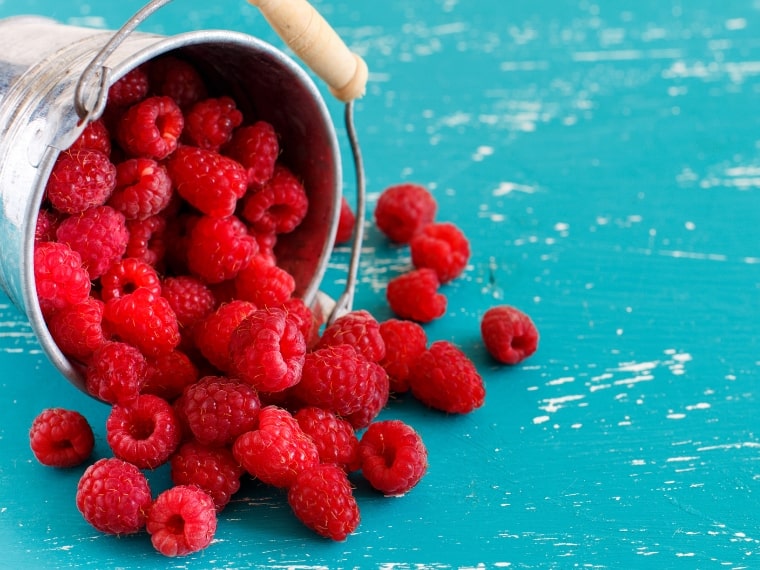
Turquoise is a joyful and soothing color that combines the tranquility of blue with the optimism of yellow and the freshness of green. The opposite of turquoise is alizarin crimson – a deep shade of red.
Turquoise
Hex #30D5C8
RGB 48, 213, 200
CMYK 77, 0, 6, 16
Alizarin Crimson
Hex #D5303D
RGB 213, 48, 61
CMYK 0, 78, 71, 17
What Is the Opposite of Olive?
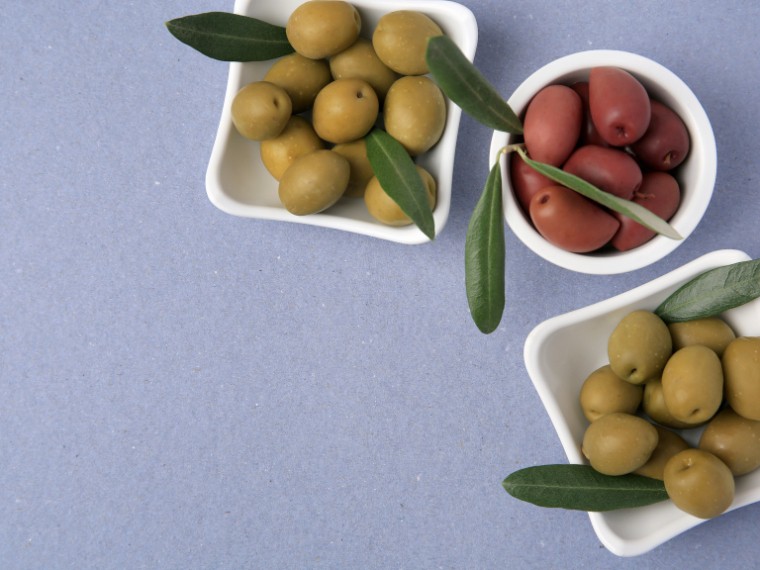
When it comes to olive, this dark yellowish-green is the opposite of sage violet on the color wheel. Its hex code is #4B3882.
Olive
Hex #708238
RGB 112, 130, 56
CMYK 14, 0, 57, 49
Sage Violet
Hex #4B3882
RGB 75, 56, 130
CMYK 42, 57, 0, 49
What Is the Opposite of Dark Green?
When it comes to dark green, it comes in many variations, from intense greens to deep yellowish greens. The opposite of dark green is purple.
Dark Green
Hex #006400
RGB 0, 100, 0
CMYK 100, 0, 100, 61
Purple
Hex #640064
RGB 100, 0, 100
CMYK 0, 100, 0, 61
What Is the Opposite of Emerald Green?
Emerald green is a deep, intense green. Its opposite color is mulberry – something between purple and magenta.
Emerald Green
Hex #50C878
RGB 80, 200, 120
CMYK 60, 0, 40, 22
Mulberry
Hex #C850A0
RGB 200, 80, 160
CMYK 0, 60, 20, 22
What Is the Opposite of Pine Green?
The opposite color of pine green is dark red – a deep variation of red similar to maroon.
Pine Green
Hex #01796F
RGB 1, 121, 111
CMYK 99, 0, 8, 53
Dark Red
Hex #79010B
RGB 121, 1, 11
CMYK 0, 99, 91, 53
What Is the Opposite of Sage Green?
Sage green can range from grayish-green – the color of dried sage leaves – to a pale green-gray with slightly yellow undertones (fresh sage color). The opposite color of sage green is lavender purple.
Sage Green
Hex #9CAF88
RGB 156,175,136
CMYK 38, 13, 45, 5
Glossy Grape
Hex #9B88AF
RGB 155, 136, 175
CMYK 11, 22, 0, 31
What Is the Opposite of Mint Green?
Mint is a light, rich green shade inspired by the plant of the same name. The opposite of mint green is pale magenta.
Mint Green
Hex #98FB98
RGB 152, 251, 152
CMYK 39, 0, 39, 2
Pale Magenta
Hex #FB98FB
RGB 251, 152, 251
CMYK 0, 39, 0, 2
What Is the Opposite of Lime Green?
Lime green is a bright, vibrant green that was associated with strength, rebirth, and health in ancient Egypt. The color is inspired by the citrus fruit of the same name. The opposite of lime green is fuchsia – a shade of magenta.
Lime Green
Hex #00FF00
RGB 0, 255, 0
CMYK 100, 0, 100, 0
Fuchsia
Hex #FF00FF
RGB 255, 0, 255
CMYK 0, 100, 0, 0
What Is the Opposite of Pistachio Green?
Pistachio is a warm, vibrant shade of yellowish-green. The opposite color of pistachio green is amethyst – a shade of purple.
Pistachio
Hex #93C572
RGB 147, 197, 114
CMYK 25, 0, 42, 23
Amethyst
Hex #A472C5
RGB 164, 114, 197
CMYK 17, 42, 0, 23
The Effect of Light on the Opposite of Green
When it comes to the effect of light on the opposite color, it’s important to understand the concept of color mixing and the additive color model.
In the additive color model, the complementary color to green is magenta. In this model, colors are created by mixing different wavelengths of light. When red and blue light are combined in equal intensities, they create magenta light.
As a result, a vibrant green in RGB has a complementary hue of equivalent intensity: magenta. The brighter the green, the more vibrant the opposite.
How Do Greens and Their Opposites Fuse to Create Stunning Color Contrasts?
Green, beyond the physical properties of color, is associated with harmony, health, new beginnings, freshness, growth, and abundance. It relaxes, revitalizes, and brings a sense of balance to your life.
Learn more about the meaning of green.
For an eye-pleasing effect, match the hue with its complementary color. Complementary colors are extremely eye-friendly because they stimulate different photoreceptors, which contribute to color vision.
Rod cells, which are responsible for seeing in low light conditions, can interact with the cone cells through different pathways. Additionally, a special type of light-sensitive protein called melanopsin, found in certain cells in the eye, not only helps regulate our sleep-wake cycle but also seems to affect our perception of colors. [1]
Furthermore, complementary combos also provide a strong contrast.
To find the opposite of your chosen shade, use a digital complementary color calculator. This way, based on the hex code, you will be able to get the opposite in both RYB and CMY/RGB.
Last Words on the Opposite of Green
Still wondering what color is opposite of green? Green is best complemented by red (in traditional art) or magenta (in modern color theory). However, magenta is the true opposite of green, both in light and pigment.
Did you like this article about the opposite of green? Share it with your green-loving friends.

